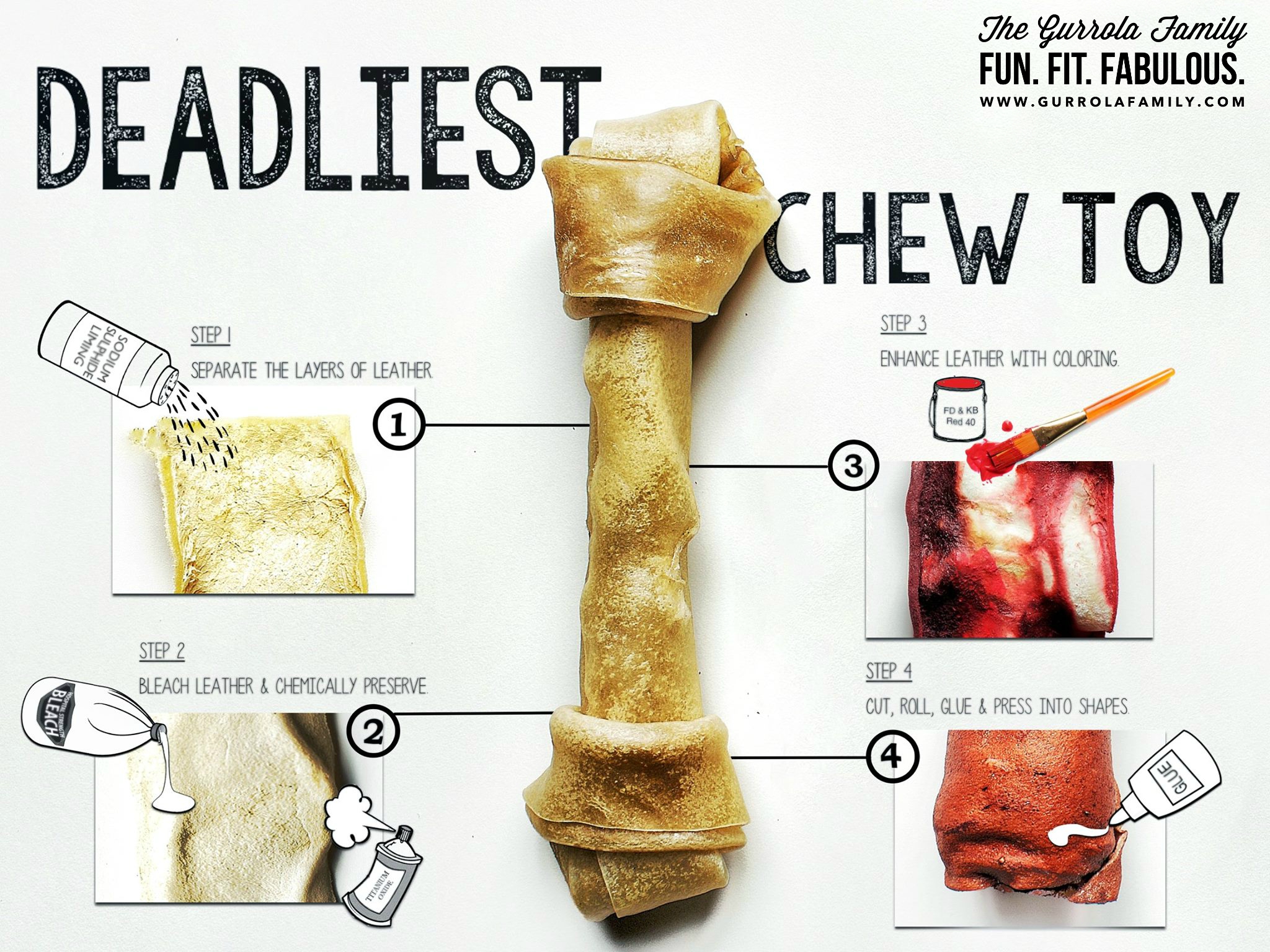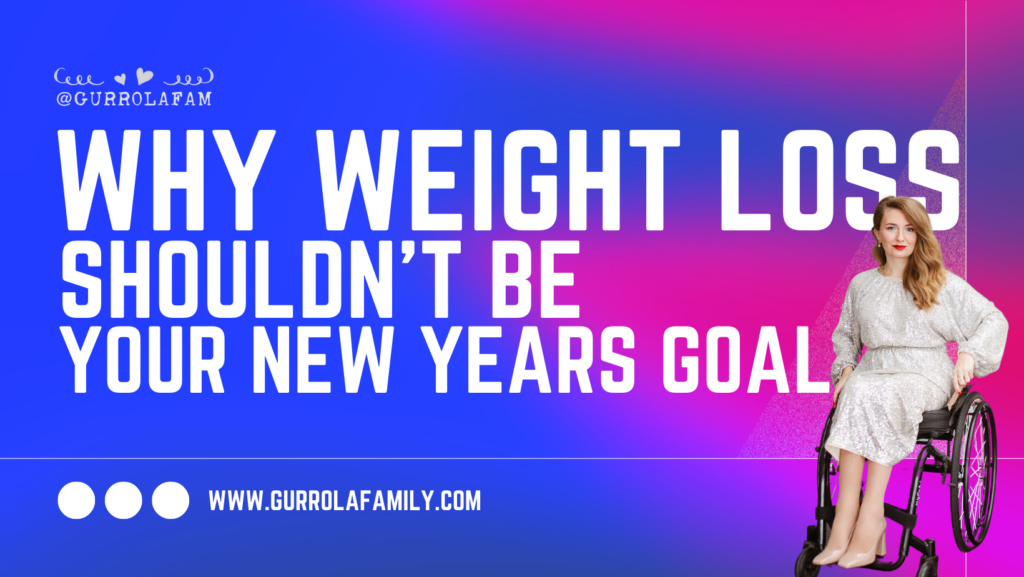
The time is almost here to say goodbye to the past year and say hello to the new!
With the holiday season wrapping up and the new year slowly creeping closer, there is no doubt many of us have already created our long list of life-changing resolutions that we *promise* to keep for the next 365 days. And one of the most popular resolutions to make an annual appearance? Weight loss.
Of course, striving to slim down and live an active lifestyle is a great goal to set for yourself, but the problem can arise when we look at the way people tend to measure this goal. Yep, we’re talking about the scale. It’s no surprise that the number staring back at you has held a lot of weight through the decades, but what if we told you it might not be the best way to track your health into the new year?
Confused? Keep on reading to discover why weight loss shouldn’t be your New Year’s goal, and what resolution you should set instead!
WEIGHT LOSS FOCUSES ON GENERALIZATIONS
Big-picture thinking has its perks, but when it comes to your body, you want to be as detailed as possible. We’ve all probably heard the word “BMI” tossed around in weight loss conversation or back in our high school health class. In fact, this is probably how you got the magic number in your head that you’ve been trying to hit on the scale for years. But do you know the actual science behind it?
Turns out, the methodology behind BMI isn’t as scientifically complex as you might think. Short for Body Mass Index, this long-practiced method aims to determine a “healthy” body based solely on gender, weight and height. And while previously seen as the pillar for weight management, this approach has earned a flawed reputation. By relying on a general ratio between height and weight, BMI cannot truly capture WHAT is contributing to the number on the scale. And because it fails to take into account everything from fat percentage to muscle mass, it can lead to faulty results.
This is because fat mass and muscle mass contribute to weight in very different ways. Fat is essential to survival, but when it is in excess, health issues can arise. In comparison, muscle mass is good for your health, but it also tends to weigh more by volume than the same amount of fat. This means an increase in the number on the scale could be attributed to a gain in muscle mass, even if body fat stays the same or even decreases. And that’s exactly why the limitations of BMI effect the method’s accuracy.
For example, people who are shorter, yet possess high muscle mass, are often classified as “overweight” by BMI standards. This is because their muscle causes them to exceed the recommended weight for their height. Not to mention, everyone’s body is built differently, and BMI can often fail to consider these beautiful differences.
This is why body composition matters.
BODY COMPOSITION FOCUSES ON DETAILS
Body composition is a newer metric that has taken the fitness industry by storm. This in-depth approach takes a more detailed look at the body by examining the key factors that actually compose your weight. main focus is on fat percentage, but it also breaks down muscle weight, bone mass, and more. Body composition is most accurately measured by your doctor, but it can also be tracked with a body fat caliper or by measuring the circumference of your waist, legs, and arms.
Here is an example of what average body composition may look like:
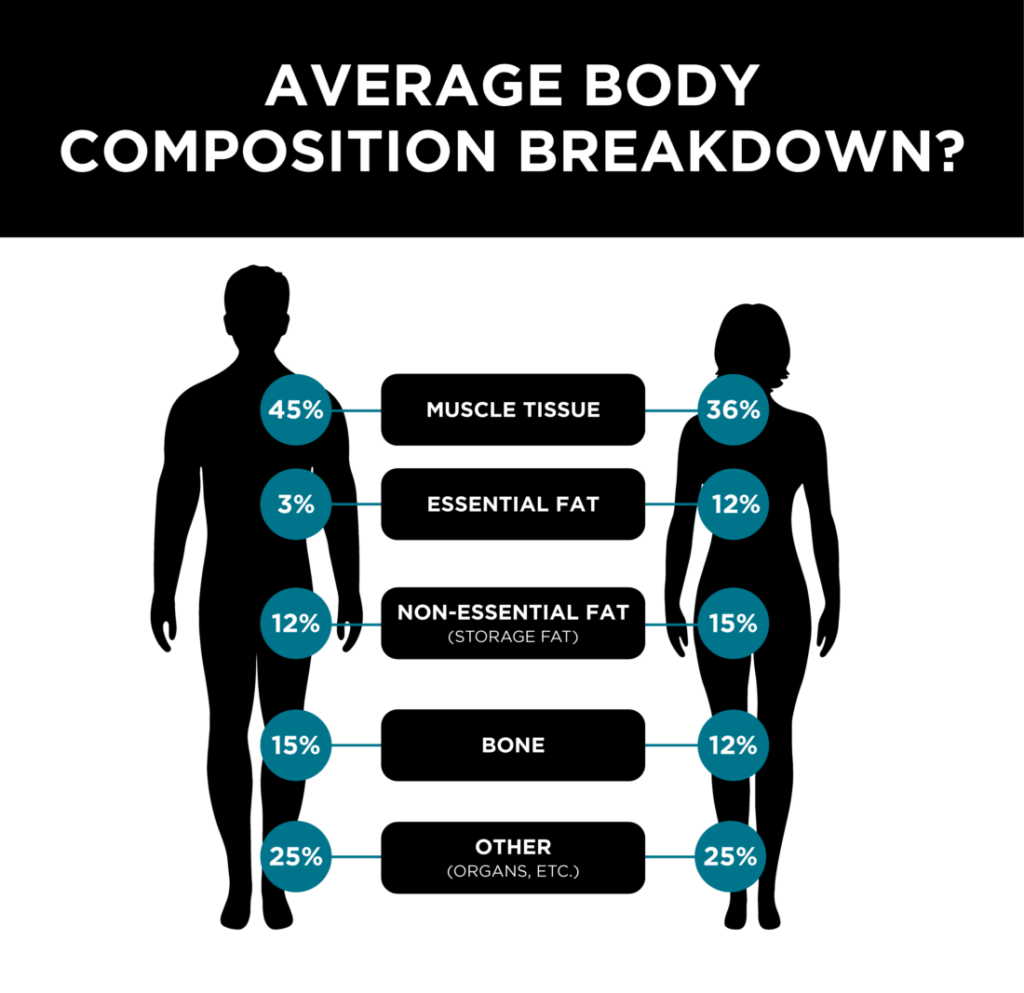
Body builders are a great group to examine when illustrating the advantages of body composition over BMI. While these athletes may tend to weigh more than the average person in their height/gender class, much of this weight is a result of their impressive muscle mass. From a BMI perspective, they would often be thrown into the “obese” category, whereas their body composition would indicate they actually have a healthy fat percentage.
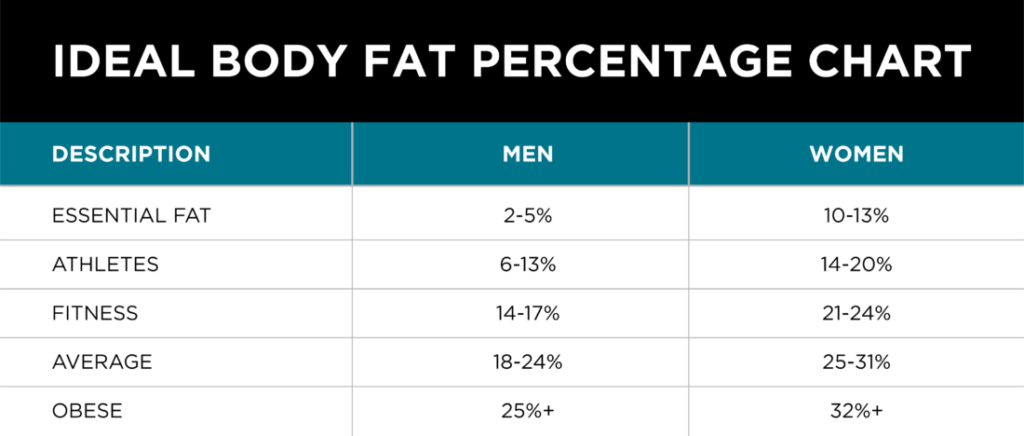
Because body composition focuses on the details to create a full body picture, it’s a great way to help determine which specific lifestyle habits may be contributing to overall weight and which habits may need adjusting. So, whether your personal goal is to build muscle or lower body fat this New Year, gauging your progress according to body composition will help you lay out a clear path that is easy to visualize and follow—without having to constantly check in with the scale.
TIPS FOR A HEALTHY BODY COMPOSITION
- Work out 3-4x a Week: Exercise is crucial when it comes to developing a healthy body composition. Cardio workouts are ideal for burning calories and lowering body fat while weight training is a great go-to for building muscle and increasing tone. Feel free to mix and match your workout based on your personal fitness goals! Do NOT jump into a 30+ minute intense workout if you haven’t done one in awhile. DO start small, even if its just 5 minutes of stretching properly and build from there. This isn’t a race, it’s taking care of your health so you can get to the lifestyle you desire.
- Prioritize Nutrition: A healthy body isn’t ALL about cardio and weights. In fact, creating a balanced diet that prioritizes good nutrition is just as essential to reaching optimal body composition. Eating meals high in fruits, veggies and protein—and avoiding those high in sugar and fat—is an excellent way to ensure your body gets proper fuel. Do NOT eat a boring meal plan, you’ll get tired of it and give up. DO find exciting new meals to try that align with your goals.
- Get Enough Sleep: You might think “just one more episode” late at night won’t hurt…but science says different. Lack of sleep is a sneaky culprit that can contribute to stored body fat, especially in the stomach area. This is because lack of sleep raises cortisol levels (i.e. the stress hormone) causing the body to cling to excess fat. So, if lowering your body fat percentage is at the top of your New Year’s list, make sure to get those zzzs. Do NOT push yourself beyond the point of tired. DO try to recognize your bodies signs it’s time to rest, or slow down…it’s OK to take a nap.
- Stay Hydrated: Did you know that at least 60% of your body is made up of water? Not only does water act as a building block for our cells, it also helps transport nutrients to the muscles in order to help increase strength and provide energy…something you definitely need when hitting the gym. Do NOT drink those “sports” drinks they are usually packed with so much sodium it will to the opposite and dehydrate you. DO drink water, add things to it like fresh fruit slices, mint or lavender.
- Take Progress Photos: Because body composition focuses more on a healthy fat percentage than the number on a scale, it is much easier to see results by the way your clothes fit or the way you look in the mirror. To get a better idea for your progress, try taking before and after pictures thorough your fitness journey. This will help you visualize both loss in body fat and increase in muscle tone.
- Stand in natural light: Natural light is a must when it comes to shooting a clear photo. This lighting will ensure that your picture can be in clear focus and isn’t impacted by shadows, highlights or blur. Even better, make sure the light matches by taking your before and after photos around the same time of the day.
- Consider the angle: Taking your picture at the right angle is another pro tip. Eye level is the optimal height, as it won’t distort proportions with odd angles. Remember, these shouldn’t be selfies! So, try setting up a tripod or have a friend take the photo for best results.
- Snap a photo from all sides: Don’t just take a picture facing the camera. Get a full body photo of the front, back and sides of your body. This way you can see all of the changes happening in the different areas.
- Pick the right outfit: Opt for fitted swimwear or a sports bra with well-fitted shorts. Avoiding baggy clothes will help show off your shape and give you a clear understanding of what is happening on the outside. Also, don’t forget to wear the same outfit in both your before and after photos.
- Keep the background simple: Less clutter equals a better view of your progress. Try standing in front of a blank wall for minimal distractions.
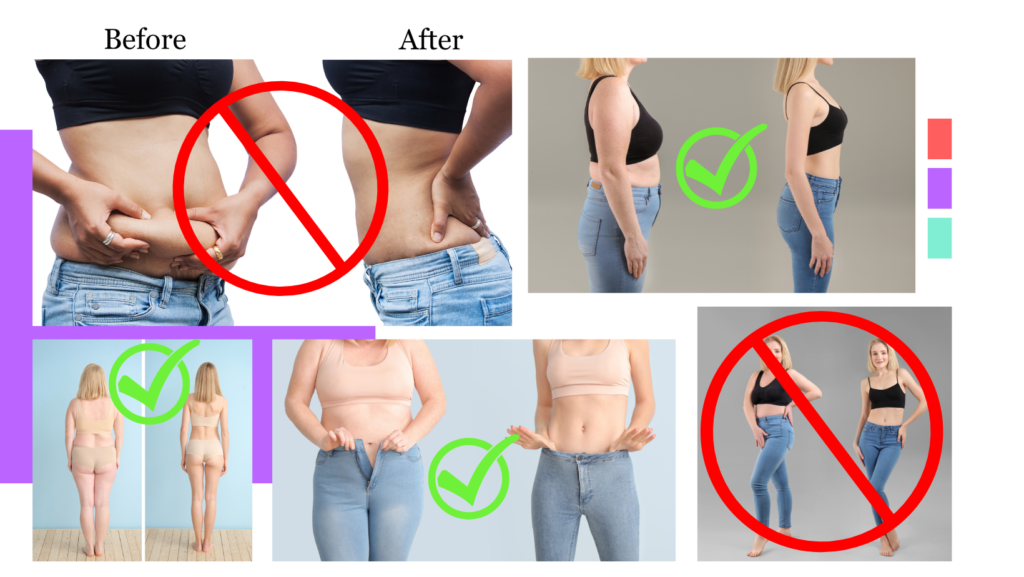
These statements are not intended to diagnose, treat, cure or prevent any disease. We are not medical advisers, just merely posting research and suggestions. You should always know your own body and seek medical advice from professionals.
Credit: Modere Latest
https://www.medicalnewstoday.com/articles/265215#Waist-size-linked-to-diabetes-risk,-regardless-of-BMI/
https://pubmed.ncbi.nlm.nih.gov/15797686/
https://www.ncbi.nlm.nih.gov/pmc/articles/PMC6566799/


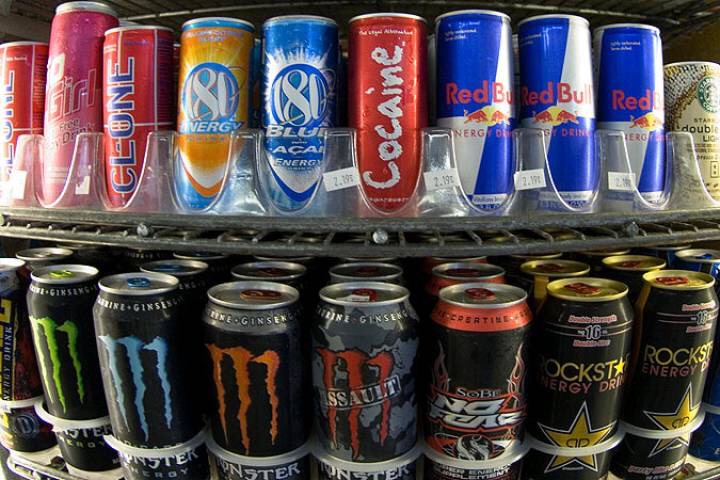
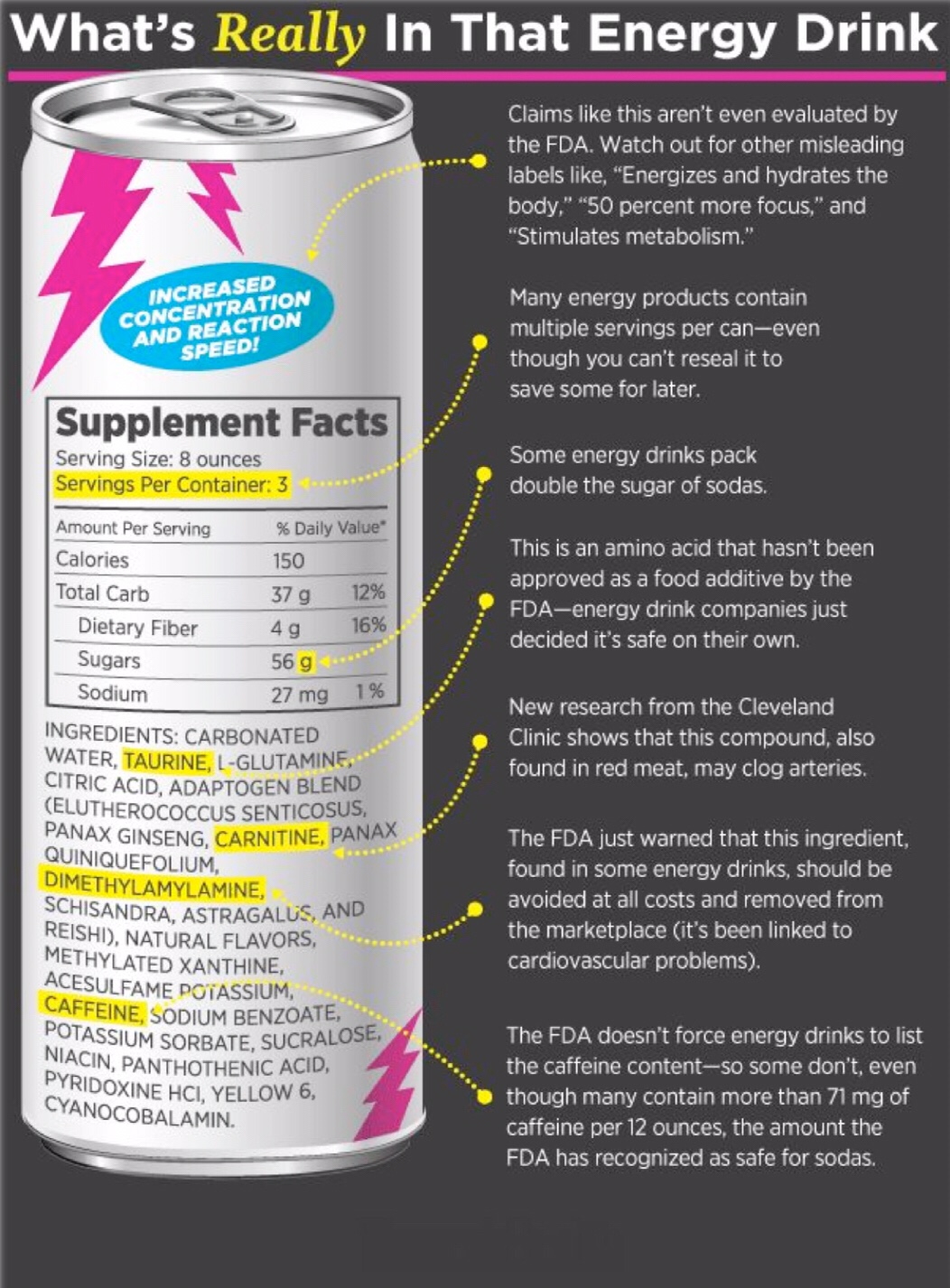 The ingredients in energy drinks all have specific effects and can affect a person differently, depending on their characteristics. Focus on trying to get enough sleep, proper nutrition and exercise regularly to keep your energy level up.
The ingredients in energy drinks all have specific effects and can affect a person differently, depending on their characteristics. Focus on trying to get enough sleep, proper nutrition and exercise regularly to keep your energy level up. However there IS a natural way to get more energy. Modere’s Energy Shot has only natural ingredients, with none of the junk! One 90ml bottle a day:
However there IS a natural way to get more energy. Modere’s Energy Shot has only natural ingredients, with none of the junk! One 90ml bottle a day:
 This recipe makes moist and cake-like gingerbread that packs a sneaky serving of black beans in each bite. They are loaded with protein, fiber, and nutrients for a healthier treat. (I’ll be adding another more crisp option)
This recipe makes moist and cake-like gingerbread that packs a sneaky serving of black beans in each bite. They are loaded with protein, fiber, and nutrients for a healthier treat. (I’ll be adding another more crisp option)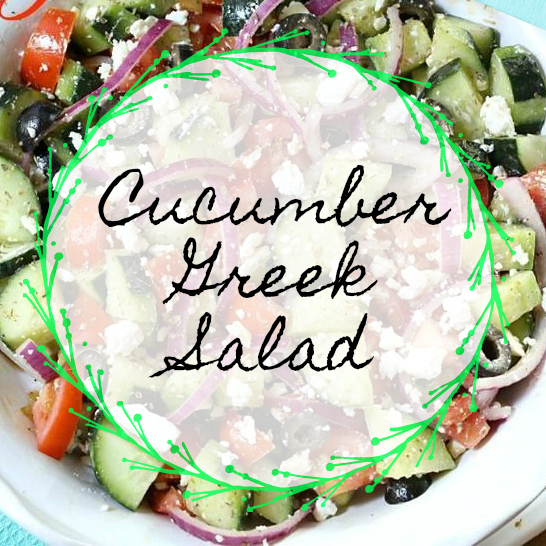 This Cucumber Greek Salad is light and refreshing, and full of healthy ingredients. With minimal prep, it makes an easy side dish for any meal!
This Cucumber Greek Salad is light and refreshing, and full of healthy ingredients. With minimal prep, it makes an easy side dish for any meal! As few as one diet soda daily may increase the risk for leukemia in men and women, and for multiple myeloma and non-Hodgkin lymphoma in men, according to new results from the longest-ever running study on aspartame as a carcinogen in humans. Importantly, this is the most comprehensive, long-term study ever completed on this topic, so it holds more weight than other past studies which appeared to show no risk. And disturbingly, it may also open the door for further similar findings on other cancers in future studies.
As few as one diet soda daily may increase the risk for leukemia in men and women, and for multiple myeloma and non-Hodgkin lymphoma in men, according to new results from the longest-ever running study on aspartame as a carcinogen in humans. Importantly, this is the most comprehensive, long-term study ever completed on this topic, so it holds more weight than other past studies which appeared to show no risk. And disturbingly, it may also open the door for further similar findings on other cancers in future studies.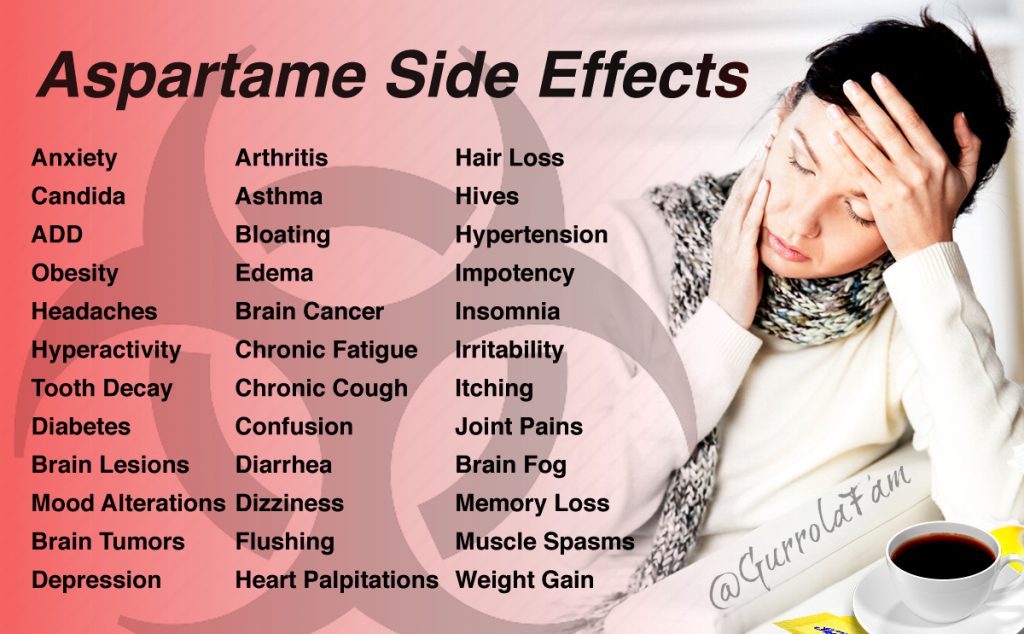
 This recipe has saved our morning sanity. It’s so easy and we make a bunch all at once so we have 1 – 2 weeks worth of breakfasts DONE and ready to go.
This recipe has saved our morning sanity. It’s so easy and we make a bunch all at once so we have 1 – 2 weeks worth of breakfasts DONE and ready to go.